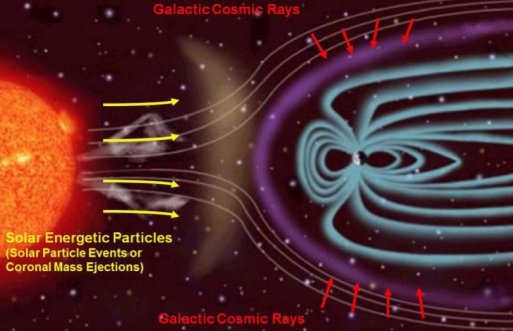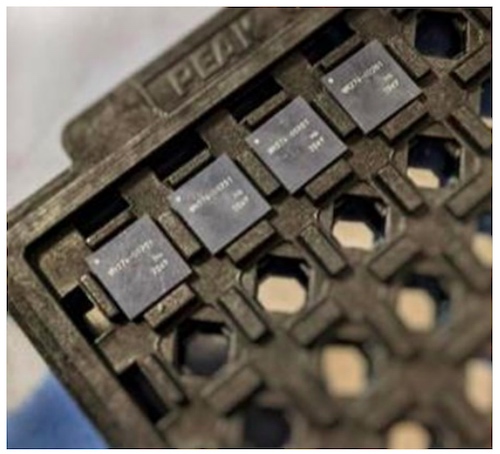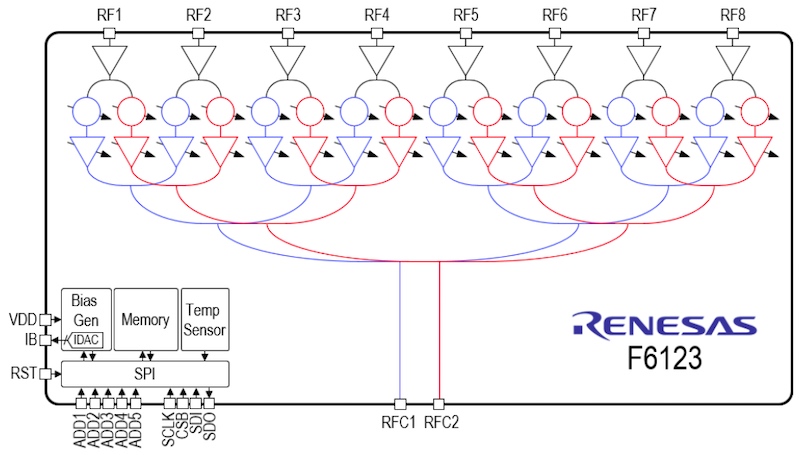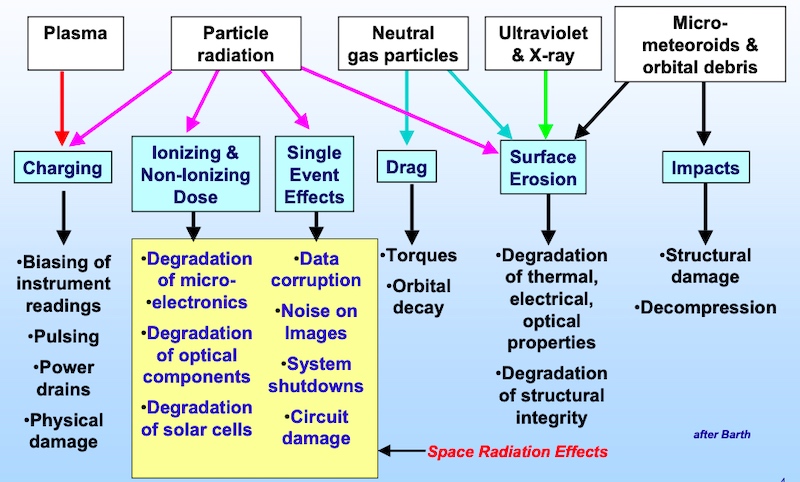The global space electronics market is growing at an estimated constant annual growth rate (CAGR) of 3% within the 2021 to 2026 period. In dollar amounts, this industry is projected to leap from $1.101 billion in 2019 to $1.354 billion in 2026. Some of the space-grade electronic components accounting for this growth appear in telemetry technology, electrical power subsystems, tracking and command subsystems, attitude and orbit control subsystems, and communication subsystems.
Conventional electronic components don't fare well in space due to micrometeoroids, lethal radiation, man-made debris, and high fluctuating temperatures. These devices also experience intense vibration and contamination during takeoff and satellite separation. Under these conditions, regular off-the-shelf parts would experience several issues, like bit flips and burnouts.

Ionizing radiation sources in interplanetary space. Image used courtesy of NASA and Analog Devices
Additionally, two other issues space-bound electronics may undergo are single event effects (SEE) and total ionizing doses (TID)—both caused by hazardous radiation. SEEs can cause electronic components to fail instantaneously while TID causes degradation over time. By radiation hardening components—a notably expensive process—IC manufacturers can prevent these effects and ensure that electronics will function in space.
In this article, we'll round up some recently-released space-grade ICs, highlighting the technological capabilities of each.
DoD Taps Bae Systems for 12nm Chips
The U.S. Department of Defense (DoD) recently selected Bae Systems to drive forward space-based computing with its RH12 technology. This technology is a 12nm low-power IC, a significant size reduction from conventional 45nm ICs. The scaled-down design ensures that the chip will adequately fit higher numbers of transistors on each chip at ultra-low power consumption per operation, increasing the functionality in volume- and power-limited space vehicles.

Fab engineers at BAE Systems. Screenshot used courtesy of BAE Systems
BAE Systems has a long history of supplying rad-hard electronics for some of the most well-known space missions from Apollo 11 to several Mars Rovers. The company's portfolio operates over a wide temperature range of -55°C to 125°C over an extended period.
BAE Systems also says their ASICs design flow uses top EDA tools around the industry that place emphasis on signal integrity, clock-tree synthesis, physically knowledgeable synthesis, and placement-based power optimization. Users can also find the company's devices in a range of packaging solutions: plastic ball grid array, C4 flip-chip, ceramic leadless chip carrier, ceramic column grid array, ceramic quad flat pack, and wire bond, among others.
Microchip Boosts GaN RF Offerings for Satellites
This month, Microchip also announced a significant expansion to its GaN RF portfolio: a new monolithic microwave integrated circuit (MMIC) and discrete transistor. These devices are said to combine high power-added efficiency (PAE) and linearity.

The ICP0349P 70W GaN PA MMIC. Image used courtesy of Microchip
This high performance, further powered by its GaN-on-SiC technology, is designed for several applications, including 5G, satellite communication, electronic warfare, commercial, and defense systems. The GaN-on-SiC technology has consistently provided Microchip’s solutions with the right combination of high power density, yield, voltage, and durability at extreme junction temperatures of up to 255°C.
The new additions (ICP0349PP7-1-300I and ICP1543-1-110I) offer a wide frequency range of 2 to 20 GHz at a PAE of up to 60%, supporting a broad range of applications at the microwave to millimeter wavelength frequencies.
Renesas Forges a Path for Dual-beam Active Beamforming ICs
Renesas is also broadening its space electronics portfolio with dual-beam beamforming ICs (BFICs). These solutions facilitate the current transition from bulky, mechanically-steered antennas to low-latency electronic antennas for several applications, including in-flight connectivity, maritime, LEO ground terminals, and Satcom-on-the-move.
Renesas says the new ICs are well-suited for industrial applications—particularly in handling thermal management, physical integration, and cost challenges in electronically-steered antennas.

Block diagram of the F6123, a 16-channel dual-beam Rx active beamforming IC. Image used courtesy of Renesas
With this announcement, the company is specifically expanding its mmWave LNAs and Tx BFIC families with the addition of the F6121, F6122, and F6123 for Ka- and Ku-band radar and line-of-sight communications.
Renesas asserts that these solutions offer high speed, digital interface flexibility, compact size, optimized power consumption, and low noise capabilities, as well as increased on-chip beam-state memory, dual-beam operation, and highly improved RF performance. As such, the devices may be useful for designers working with satellite applications at various frequency bands.
Space-grade ICs Must Continue to Mature
Space-grade ICs like those from BAE Systems, Microchip, and Renesas, face a number of challenges that make their specs relevant in practice. To overcome gravitational pull (regardless of the rocket payload) during takeoff, rocket launchers have high energy demands. Severe vibrations from this event and from satellite-rocket separation can also harm circuit boards and other electrical parts.

The ways in which the space environment can affect electronics are manifold. Image used courtesy of NASA
These devices also face the risk of contamination. When in Low Earth Orbit (LEO), several materials—including plastics, glues, and adhesives—will outgas. This phenomenon creates an unwanted cloud of contaminants that can degrade electronic parts. Other forms of contamination harmful to the spacecraft and its components include venting, leakage, and thruster firing.
These recent releases show a trend in space electronics toward miniaturization, material science advances, and beamforming technologies. Together, they represent a larger push to support the intense environmental, integration, cost, and performance demands in space exploration.
